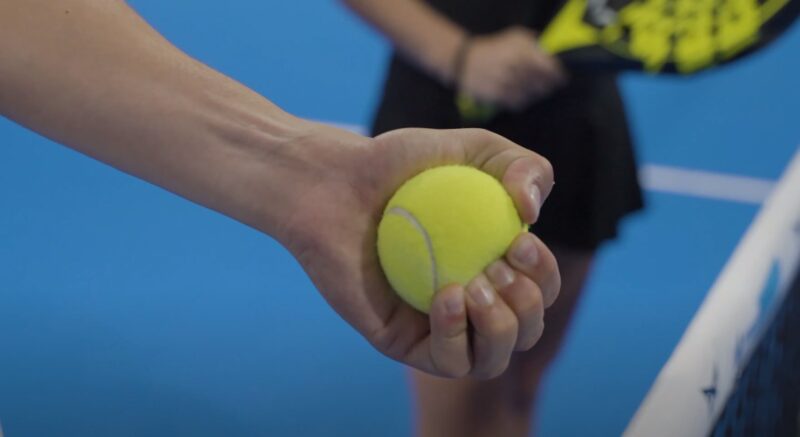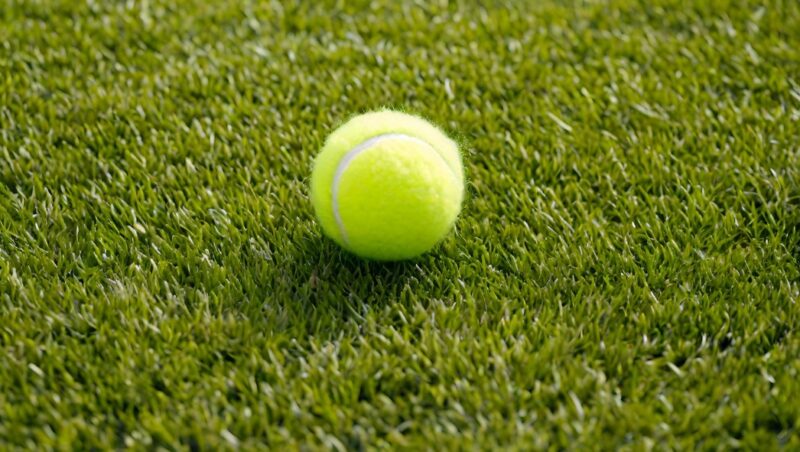The International Tennis Federation (ITF) sets strict guidelines for the weight of a tennis ball. These standards ensure a level playing field and maintain the integrity of the sport.
A tennis ball must adhere to these regulations to be used in professional play, and these standards influence recreational balls as well.
Specific Weight Range

According to the ITF, a regulation tennis ball must weigh between 56.0 and 59.4 grams (1.98 to 2.10 ounces).
This range is critical as it impacts the ball’s behavior on different surfaces, its speed, and how it responds to player strokes.
Implications of Weight Variations
The slight variations within the allowable weight range can significantly affect gameplay. Heavier balls tend to move slower but are more stable in windy conditions, while lighter balls can achieve higher speeds, making them ideal for fast-paced matches.
Impact on Gameplay

The weight of a tennis ball affects its performance on various court surfaces. On clay courts, lighter balls might pick up more material and become heavier, altering their speed and bounce.
Conversely, heavier balls might fare better on grass or hard courts by retaining consistent bounce and trajectory.
Effect on Player Techniques
Players often adjust their techniques based on the weight of the ball. Heavier balls require more physical effort to generate speed, influencing a player’s serving and stroke techniques.
Lighter balls, on the other hand, demand precise timing and control.
Influence on Match Strategies
The weight of the ball can also influence match strategies. Players might prefer heavier balls in windy conditions or when playing a defensive game.
In contrast, a lighter ball could be advantageous for an aggressive, attack-oriented style.
Manufacturing and Materials
Tennis balls are typically made from a rubber compound for the core, covered by a high-quality felt. The materials used play a crucial role in determining the ball’s final weight.
Manufacturing Process
The manufacturing process involves multiple steps – from the creation of the rubber core to the application of the outer felt layer.
Each stage must be precisely controlled to ensure the ball meets the specified weight range.
Quality Control and Standardization
Stringent quality control measures are in place to ensure that tennis balls not only fall within the weight range but also exhibit consistent performance characteristics.
Manufacturers conduct rigorous testing to adhere to ITF standards.
The Science Behind the Weight

The weight of a tennis ball significantly impacts its dynamics, including its bounce, speed, and spin. The physics behind how a ball interacts with the racket and the court surface is complex and fascinating.
Aerodynamics and Ball Flight
The aerodynamics of a tennis ball, influenced by its weight, affects how it travels through the air. Factors such as air resistance, drag, and lift all come into play, shaping the ball’s flight path during a game.
Interaction with Tennis Rackets
The way a tennis ball interacts with a racket is also affected by its weight. Heavier balls might lead to more significant impact forces on the racket, necessitating different string tensions and racket specifications for optimal play.
Comparisons and Variations
There are notable differences between professional-grade tennis balls and those used in recreational play. While professional balls strictly adhere to ITF weight regulations, recreational balls might have slight variations, impacting their performance.
Variations Across Brands
Different brands may produce tennis balls that are at the higher or lower end of the weight spectrum. These variations can influence player preferences and the feel of the game.
Historical Changes in Tennis Ball Weight
Over the years, the standard weight of tennis balls has evolved, reflecting changes in playing styles, racket technology, and court surfaces. Knowing these historical changes offers insight into the evolution of the sport.
Health Implications for Players

Risk of Injury with Different Ball Weights
The weight of the tennis ball can have direct implications on player’s health. Heavier balls can increase the risk of arm and shoulder injuries, as they require more force to hit.
Repetitive use of heavier balls can lead to conditions like tennis elbow or shoulder tendinitis.
Importance of Proper Technique
Using the correct technique becomes even more crucial when playing with balls of different weights. Coaches and trainers emphasize the importance of proper stroke mechanics to minimize injury risks, especially when dealing with heavier balls.
Adaptation and Conditioning
Players must adapt their conditioning and training routines to prepare for the physical demands of playing with different weighted balls.
This includes strengthening exercises, flexibility training, and practicing with various ball types to acclimate their bodies.
Choosing the Right Tennis Ball

Factors Influencing Ball Choice
Selecting the right tennis ball is not a one-size-fits-all decision. Factors like playing surface, weather conditions, and personal preference play a significant role.
For instance, players may opt for a lighter ball on a fast court or a heavier one for clay surfaces.
The Role of Player Skill Level
Skill level is another critical factor in ball selection. Beginners might benefit from lighter balls that are easier to hit and control, whereas advanced players may prefer the challenge and stability of a heavier ball.
Knowing Ratings and Types
Tennis balls come with different ratings and types, like ‘regular duty,’ ‘extra duty,’ and ‘high altitude.’ Having knowledge about these classifications helps players choose the most suitable ball for their playing environment and style.
Modern Tennis Ball Design

Technological Advances
The ongoing advancement in materials science and manufacturing technologies is set to revolutionize tennis ball design. Future balls may feature new materials that offer better control, durability, and performance consistency.
Environmental Considerations
Sustainability is becoming an increasingly important factor in tennis ball manufacturing. Eco-friendly materials and recyclable components are likely to become more prevalent, influencing the weight and feel of the balls.
Balancing Tradition and Innovation
As the sport evolves, there’s a delicate balance between adhering to tradition and embracing innovation. Future changes in tennis ball weight and design will need to respect the heritage of the sport while enhancing playability and safety.
FAQs
Can the weight of a tennis ball affect its lifespan?
Yes, heavier ones tend to have a shorter lifespan as they endure more wear and tear from the increased force of play.
Are there different weight specifications for junior tennis balls?
Junior tennis balls, often softer and lighter than standard ones, are designed for young players. They typically weigh less to facilitate easier learning and reduce the risk of injury.
How does altitude affect the choice of tennis ball weight?
At higher altitudes, air resistance is less, so lighter balls can travel faster and bounce higher. Players may opt for slightly heavier ones in these conditions to maintain control.
Do professional players use different weight balls for practice and matches?
Generally, professional players practice with the same weight they use in matches to ensure consistency in their play and adapt to the ball’s behavior.
Can weather conditions influence the effective weight of a tennis ball?
Yes, in humid conditions, tennis balls can absorb moisture, effectively becoming heavier and altering their play characteristics.
Is there a significant difference in weight between indoor and outdoor tennis balls?
No significant difference in weight exists between indoor and outdoor tennis balls. The primary difference lies in the type of felt covering, which is adapted for different court surfaces.
Final Words
The weight of a tennis ball, while seemingly a minor detail, is a cornerstone of tennis gameplay. It influences everything from the physics of ball movement to player strategies and techniques.
This intricate balance of weight, material, and manufacturing ensures that tennis remains a dynamic and challenging sport for players at all levels.
It doesn’t matter if you’re a casual player or a seasoned professional; appreciating the nuances of a tennis ball’s weight can enhance your understanding and enjoyment of the game. We cover various topics regarding sports, and you can find out where to play tennis in London in one of our latest articles. Stay tuned for more content like this!

